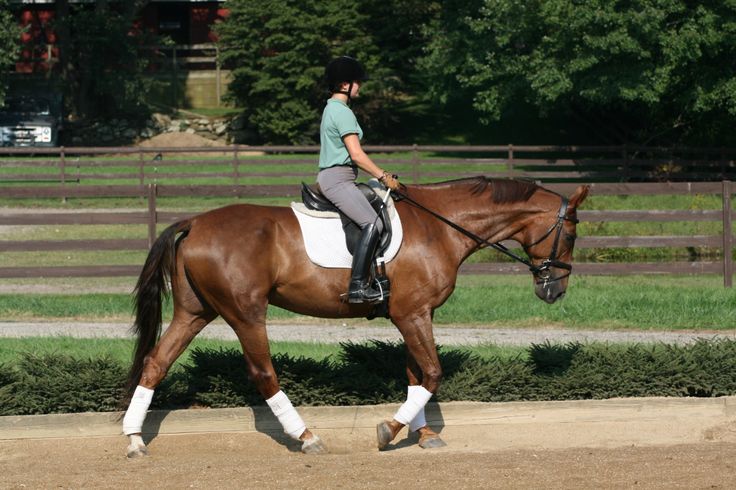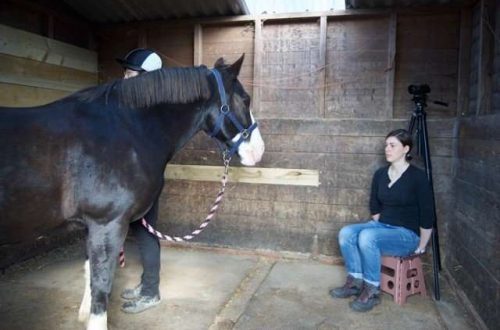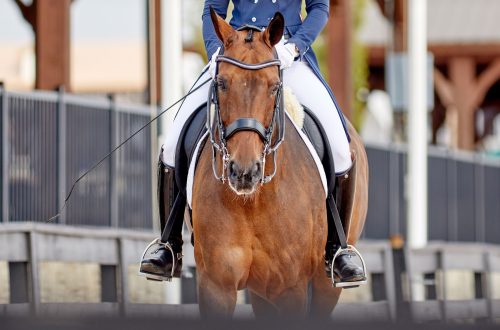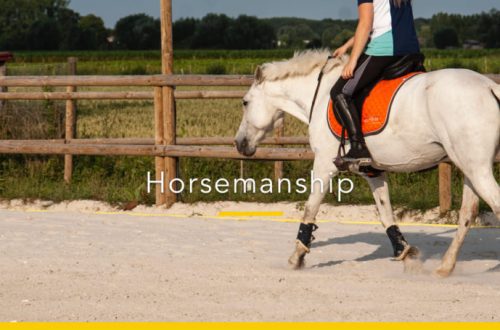
Activate your horse’s “engine”
Activate your horse’s “engine”
Many trainers talk about how the horse’s hindquarters should be “active”. But what is this “activity” and how to achieve it? What is the correct activity, and how can the rider use his controls to activate the horse’s engine?
Activity and balance
Demanding activity is one of the coaching methods to encourage the rider to look for the right momentum. Think of the horse’s hind legs as the engine. The engine naturally pushes the horse forward. When you add activity from the rear with your legs, you increase the RPM of the engine. At the same time, you are signaling the horse to wait with the reins. You should feel an increase in power, but not speed. The tempo must remain the same or become only a little faster, the rhythm of the gait must remain pure, the stride must not widen, and the “kilometers per hour” must increase.
Impulse is an essential part of a properly balanced horse and one of the most important qualities that riders should focus on. If the horse is in the right balance at a certain level of fitness, every exercise and movement at the appropriate level should be performed with ease. Activity from the hindquarters is important to achieve longitudinal balance, as the horse needs more pushing, more engagement and involvement of the hind legs to keep them under him. When the horse’s hind legs are energetic and in the right place to carry weight, the horse’s back can relax and this allows energy to flow through the body from the hindquarters to the mouth. If the horse lacks activity and the hind legs begin to lag, he cannot carry his weight on his hindquarters and his energy will be blocked and not circle.
Before you can ask your horse for activity, make sure that:
Correct alignment on the circle. The shoulder fell out to the left.
If you try to add activity when the horse is out of alignment, the energy you are creating in his hind legs disappears due to curvature, does not pass through the back, and does not connect the hind legs and the horse’s mouth. Use the contact you feel on the rein to maintain lateral balance, because the weight on the rein reflects the weight on the shoulders. In other words, if you feel that the horse is heavier on one rein, in most cases it will mean that he is leaning more on one shoulder; a horse is not likely to be stiff only in the jaw or neck. If the horse is in even contact, this means that his shoulders are in the correct position and carry the weight evenly on the left and right. To help a horse that is falling on one rein straighten out and become more even in contact, leg work on the heavier side to move the appropriate shoulder under it and straighten the shoulders.
tap-tap
When I teach the rider to add momentum to the horse’s “motor” I say “tap tap!” The tap-tap idea helps the rider find the right energy in their own legs. Impact is not a blow, but a quick tapping of the shin, heel or spur. The rest of the leg is relaxed, allowing the horse’s energy to flow through the horse under the seat and leg. Since we are all different, just like horses, you may need to experiment. Some horses respond best to the slightest touch, some need a normal push, and some need a little tickle with the whip along with leg action. The timeliness and energy of the activating message is more important than its strength. Sometimes riders press their legs on the horse all the time. Then she becomes lethargic and stops responding to controls. The rider must work in a tap-tap rhythm to teach the horse to activate in response to a light leg. Then he can act more easily, and the horse will offer more in return.
You need to use the reins to tell the horse “take your time” when you activate it with your leg. Speed causes the horse to lag behind, and this negatively affects the longitudinal balance. Use fast action – within a step or less – close the hand and don’t pull back when asking the horse to wait. Immediately after this, the rider must soften the reins to allow the horse to walk on its own. Repeat the exercise until the horse learns the lesson and rushes in response to the activating leg.
When done correctly, activating the horse’s “motor” will give you the power you need to improve its longitudinal balance and therefore achieve collection. Riders of all skill levels should work on rear activation. A rider whose horse is moving from the hindquarters learns to direct the horse’s energy and create power.
Joao Miguel Varela Torrao, Annie Morris (source); translation Valeria Smirnova.





